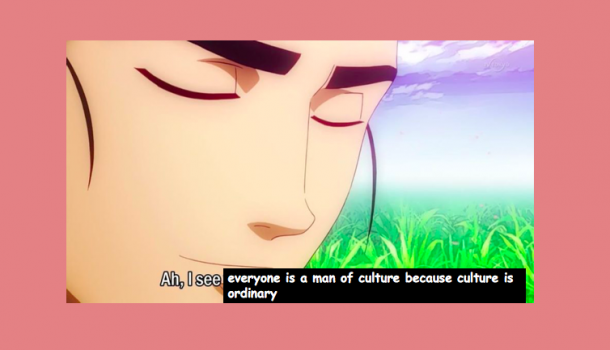The Leadership Programme 2020 begins!
Nayanika
8 May 2020

The Culture Lab Leadership Programme’s 2020 batch is here! Even if it’s not in the way we pictured it.
This year, the programme takes place over video calls, excel sheets, countless shared documents and screenshots of design files shared over WhatsApp for feedback, eliciting encouraging emojis from the non-designer chorus. In case the current scenario doesn’t suggest it – the programme has gone digital!
With culture industry visits and masterclasses on pause for the time-being, our batch of 2020 is working on some really cool things with The Meme Project. TMP is an exciting transmedia project that historicizes, explores and decodes contemporary meme-making through the varied lenses that the Fellows bring to it – culture studies, mass media, literature, art and design.
Over the month, we’re also working through our curriculum and teaching it to each other. The curriculum traces the different facets of a cultural sector – right from understanding how we theorise culture and the complex identities and communities that create it, to how the city shapes these ideas. It also explores how we form institutions around it, manage them and sustain them.
The irony of studying the cultural sector without stepping out of our homes hasn’t escaped us – the culture sector in the city remains in a state of flux. Our friends at ACRI have worked on a great resource for how we can help, you can find it here.
But as we complete the first week of our Leadership Programme, we’ve gone back to some of our basics – I spoke to our Fellows about some introductory concepts in cultural theory, and Labbie Mukta took them through a primer on design thinking.
We began with Theodor Adorno of the Frankfurt School and explored the culture industry as a ‘sedative of the masses’. Then we moved into the British School - Raymond Williams and Stuart Hall posited slightly more empowering theories of audience reception and agency. We studied what the ‘aura’ of the artwork has to do with Piratebay and Raja Ravi Varma memes, what Homi Bhabha’s ‘hybridity’ and the postcolonial identity has to do with Humans of Bombay, how culture has defined media literacy and how pop culture is negotiated. We touched upon Gramsci and how hegemonic consent and coercion make sure that culture is constantly a site of tension — and discussed how we should be listening to the organic intellectuals whose voices break through the noise. According to Gramsci, the organic intellectual speaks to the struggles of the subaltern - a close reading of Sumeet Samos' Ladai Seekh Le makes sense of this concept and uppercaste institutional gatekeepers.
Much of cultural theory has something to offer for the current times – Hall’s reception theory deals in how we decode meaning, but also the codes inherent in the way it is packaged and distributed —this is useful for understanding the spread of fake news. Williams writing ‘There are no masses, only ways of seeing people as masses’ is something to remember for whenever we find hegemonic discourses defining the way we think about communities and lives. Bourdieu reminds us of the privileges and cultural capital we tap into when we talk about or engage with theory during a pandemic – or even open up our laptop for a video call.
After touching upon Gayatri Spivak’s writing on the subaltern — we will be moving into more contemporary voices that are writing about paradigms of thought that shape the way we understand culture and the conflict it is in today. Stay tuned for this in the next few weeks.
The next day, Mukta spoke to our Fellows about design thinking and how it is human behavior that is at the core of innovative, realized design. Design is a function of culture, and Mukta took us through an almost ‘semiotic’ engagement with the post-it, the Swiss knife and the Chinese takeout box. We were sufficiently wowed (as we all are whenever Mukta ‘uncovers’ design logic for us). Next, she took us through the movements that inform aesthetics, art and design today. We began with the intricacies of Art Nouveau to the undeniable coolness of the Bauhaus school of design. Seriously – Bauhaus is the answer you want when you take a quiz on which school of design your personality is most like. The courses spoke to one another – art, design and technology didn’t exist in silos, but came together in this school. Design thinking today comes largely from the Bauhaus principle of interjecting art with business and technology. Although the school itself invited the ire of the Nazis, it’s legacy lives on in modern (and postmodern?) design.
We came to Modernism, where we saw some familiar faces – specifically, Picasso’s The Weeping Woman and a melted clock face from Dali’s The Persistence of Memory. This was the beginning of the age of ‘isms’. Cubism and geometrical design, constructivism and combinations of text and illustration, impressionism and the revolution in tools for art – all shaped design thinking the way we know it today.
Post-modernism kept design on its toes with pop art and other experimental forms in art and architecture – Mukta recalled the aesthetics of Lady Gaga and the anarchist poster design of the Sex Pistols. There is the recurring conflict of ‘this is art, this is not art’, but they stood their own.
It’s been a really great first week with the Leadership Programme Fellows. I’m ending the week thinking about ‘canonical’ work in culture and design, and how these lauded concepts are sometimes better employed as methods or tools, over gospel truths. A combination of approaches is what makes us able to offer new (as well as necessary) ideas and concepts – so does that make the programme Bauhaus?!?!??!
Hear more from us soon!

